Scenic Designers' Roundtable: The Moment of Artistic Power
 David Gallo |
David Gallo |  October 23, 2012
October 23, 2012 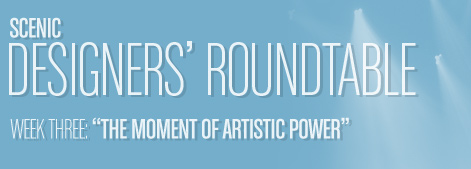 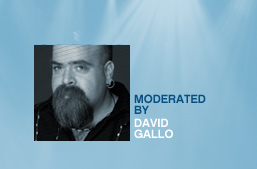 |
||||||
 |
||||||
Over the course of four weeks, scenic designer David Gallo will pose one question each week to a group of some of the top designers working in theatre and entertainment today. The hope is to scratch beneath the surface to glean some insights into these working artists’ artistic processes. SCENIC DESIGNERS’ ROUNDTABLE:
|
||||||
|
|
|
|||||
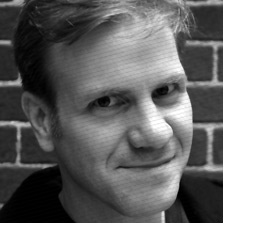
There is always a moment for me that follows the one Dave describes, sometimes almost immediately or sometimes in what seems like an eternity, and that moment is when the spark strikes; when all the words on the page, and the words spoken from the director, and the Google images, and the visual and intellectual research suddenly form a single, clear, pure connection and I make the smudge, or the scribble, or the mark on that blank piece of paper that looks like absolutely nothing to anyone else but to me is “the idea”. It is in this moment that I feel I am making the largest contribution that I will make in the entire process. Every decision I will make forward will be based on this little stupid scribble that I made in the middle of the night. That moment, when a thought becomes a thing, is truly magical. All artists (writers, painters, composers, etc.) live in this space, between a dream and a reality. To me, a “thing” is something that more than two people understand in the same way, and so the struggle is to share that idea, initially with the director, and the other creatives, then with the fabricators, and then ultimately with the audience. All along that journey, there are compromises to be made, with my own artistic ability, the relationship with the shop, gravity, time, money, etc., and that struggle can make you feel very diminished. But when it finally gets there on the stage, and someone else can see what I saw in that little smudge, well that’s a pretty powerful moment too. |
||||||
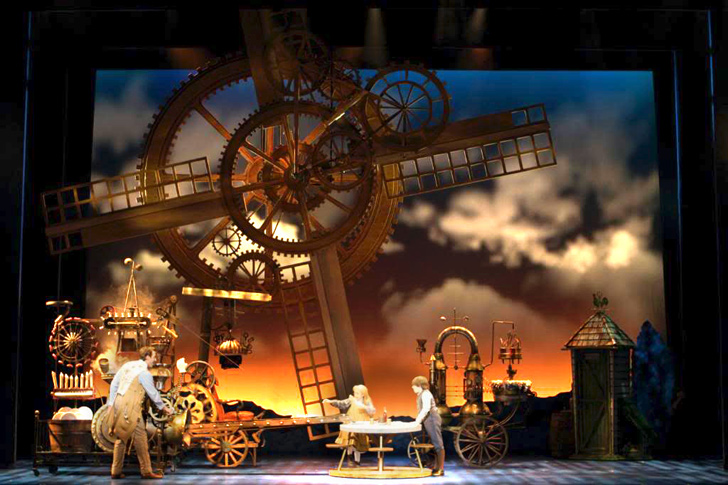 |
 |
|||||
| (Chitty Chitty Bang Bang) | (Pirates!) | |||||
 |
||||||
| (Lucky Guy) | ||||||
 |
||||||
| (City Club) | ||||||
|
|
|
|||||
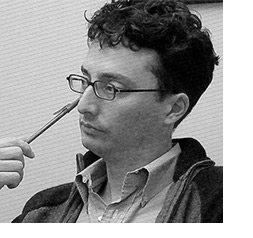
It’s the same for me. To quote one of my favorite collaborators, James Lapine: “White: a blank page or canvas. His favorite—so many possibilities.” That’s the moment where anything is possible. As soon as I make a choice, no matter how exciting a choice, I’ve killed a lot of other possibilities. But, once the choice is made, assuming it’s a choice that interests me, I love the moment when I have the model sort of pulled together, and can actually see what the set is going to look like. Similarly, I love the moment in the theatre when I see the set in a form where I can tell it’s worked. Up until then I’m convinced I’ve made a huge mistake and I’m incompetent and about to be ridden out of town on a rail. Then, if I’m lucky, there’s a moment where I can see that it does work, and looks good. Sometimes that happens at load-in, and sometimes it takes the lights or the clothes or projections to complete the picture enough to really see it. Of course, the flipside is that sometimes in following a director’s dictates I end up doing something I don’t believe in even after arguing against it. I chalk those up to part of earning a living, and try to make it the best I can within a structure I don’t like. |
||||||
 |
||||||
| (Chaplin) | ||||||
 |
||||||
| (Sondheim on Sondheim) | ||||||
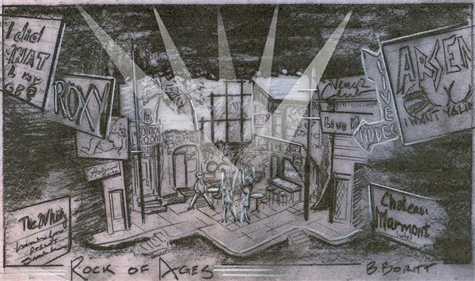 |
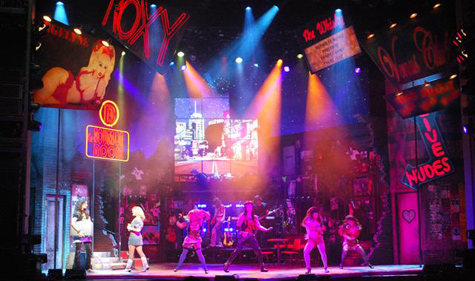 |
|||||
| (Rock of Ages - rendering) | (Rock of Ages) | |||||
|
|
|
|||||
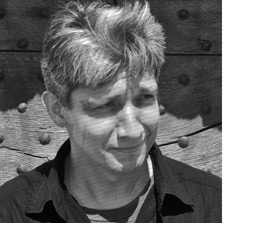
I believe that delving into the Unknown is the most thrilling aspect of any creative endeavor. It is something that cannot be explained. This is not a moment where one should feel safe; on the contrary, it is completely anarchic and terrifying. It is a very real phenomenon, but, “…whereof we cannot speak, we must remain silent.” And I think what diminishes this phenomenon is its true opposite: not delving into the unknown, lack of mystery, a stifling routine, an unending repetition of formulas, being safe. |
||||||
 |
||||||
| (Desire Under the Elms) | ||||||
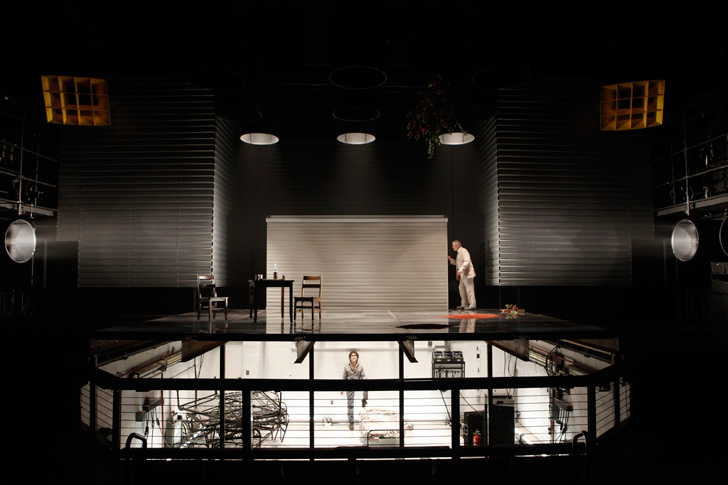 |
 |
|||||
| (Battle of Black and Dogs) | (Lost Highway) | |||||
 |
||||||
| (Appomattox) | ||||||
|
|
|
|||||
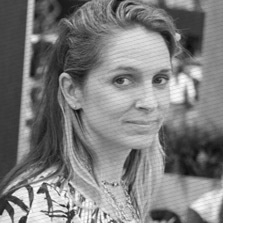
I feel the most artistically powerful when I have spent a lot of time with the script—read it many times, studied it, dissected it, distilled it, shared secrets with it and feel that we know each other intimately. When the words are like stars. When the director and I have very differing responses, or the director, or the writer (if involved) is too controlling, too unable to let others bring in ideas, then I feel a diminishment—not so much of my power, but of the ability for ideas to come. When the window is wide open, when “everything is possible,” to quote Gallo, he is right, there is power… When the window is open just a crack, the whole process is diminished. |
||||||
| (Spring Awakening) | ||||||
 |
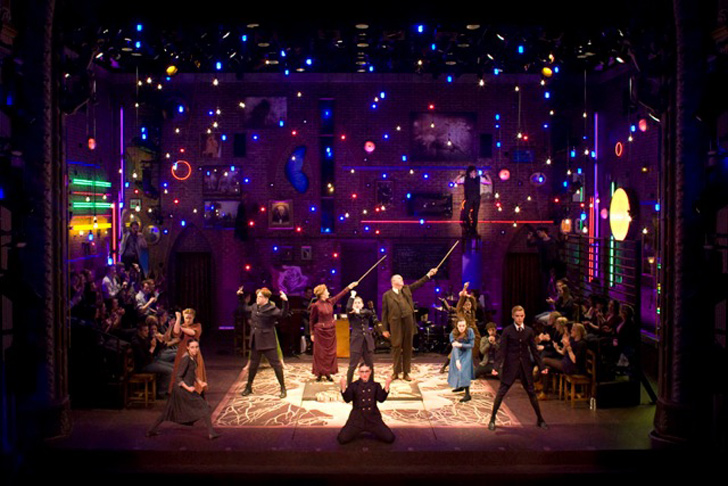 |
|||||
| (Spring Awakening) | (Spring Awakening) | |||||
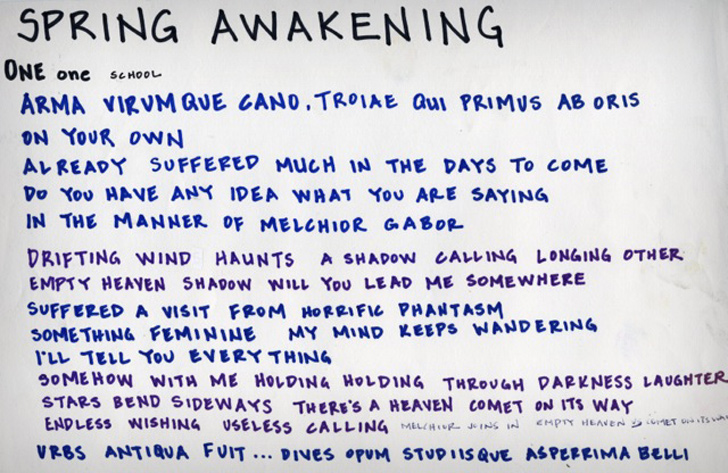 |
||||||
| (Spring Awakening) | ||||||
|
|
|
|||||
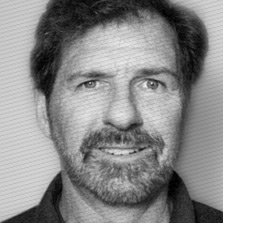
After I have time with the director, I try to swim in a pool of ideas for a long while. The water is clear with anticipation at first and slowly fills with substance. As time passes the water gets pretty murky: full of the words that make the story, impressions, images, music, director’s thoughts, theatre type, research, feelings, and instinct. The longer I can stay underwater, the more bits and pieces fall in and swirl around. At some point, reflections seem to form patterns. Everything before me conceals something that I know is there, I just can’t see it. Sometimes it is really frustrating and I have learned to be patient, not force it, and trust that each moment is adding to the foundation of something. The click, or sudden revelation, is the best part of my process. It is like the autostereograms in those Magic Eye books; you look too hard and see only patterns until suddenly, from the corner of your eye there is a 3D image fully formed. I feel the most artistically powerful when I suddenly see that image and am always startled by how clear it is. I rush to capture it, using whatever pencil is handy. Sometimes that initial clarity fuels more power as each thing falls into place. Sometimes the time dragon causes turmoil. If I do my job well my goals are clear. Strong work can infect those that will realize my ideas with tremendous energy. The thing that can diminish that feeling of artistic power is when people I work with don’t care as much as I or overwhelm the process with limitations rather than possibility. |
||||||
 |
||||||
| (Anna Karenina) | ||||||
 |
||||||
| (Dead Man’s Cell Phone - renderings) | ||||||
 |
||||||
| (Dead Man’s Cell Phone) | ||||||
|
|
|
|||||
ABOUT THE ARTISTS |
||||||
|
ROB BISSINGER has designed for the theatre for over 10 years and his work has been seen regionally in Damn Yankees, Meet Me in St. Louis, The Full Monty (Paper Mill), Half A’ Sixpence, Pirates! (Goodspeed), Hunter/Gatherers (the Wellfleet Harbor Actor’s Theatre), and Everything’s Ducky at the St. Louis Rep, for which he received a Garland Award. Off-Broadway credits include: Lucky Guy (Little Shubert), City Club (Minetta Lane), and Jacques Brel is Alive and Well and Living in Paris (The Zipper). In addition to art directing large-scale projects like the Venetian Phantom Theatre in Las Vegas, he has also been associate designer for Broadway productions including Spider-man: Turn Off the Dark, and his designs have appeared all over the world in 3 Mo’ Tenors, Chitty Chitty Bang Bang, Scooby Doo in Stagefright, Disney’s Believe, and most recently, Mythbusters: Behind the Myths. |
||||||
|
BEOWULF BORITT Broadway: The Scottsboro Boys (Tony Nomination), Rock of Ages, Chaplin, Grace, Sondheim on Sondheim, …Spelling Bee, Lovemusik, The Two and Only. Off- Broadway: More than 50 shows including The Last Five Years, Toxic Avenger, If There Is I Haven’t Found It Yet, Miss Julie, Public, Roundabout, MTC, 2nd Stage, Vineyard, MCC, New Group, Pearl, American Place, Keen Company. Other Designs: The Seven Deadly Sins (New York City Ballet), Paradise Found (London), Reel to Real (Beijing) and 2 editions of the Ringling Brothers and Barnum & Bailey Circus. He received a 2007 OBIE Award for sustained excellence in set design. |
||||||
|
RICCARDO HERNANDEZ Broadway: The Gershwins’ Porgy and Bess (2012 Tony Best Musical Revival), The People in the Picture (Studio 54), Tony Kushner’s Caroline, or Change (also National Theater, London), TopDog/UnderDog (also Royal Court, London), Elaine Stritch at Liberty (also West End’s Old Vic & National Tour), Parade (Tony and Drama Desk Nominations), Bells Are Ringing, Bring in ‘Da Noise, Bring in ‘Da Funk (also National Tours and Japan), The Tempest. Recent: La Mouette (Cour D’Honneur, Avignon Festival), Jan Karski, Mon Nom Est Fiction (Opera Theatre, Avignon Festival), Abigail’s Party (Oslo National Theater), Philip Glass’ Appomatox (Robert Woodruff director, San Francisco Opera), The Lost Highway (London’s English National Opera/Young Vic), Die Entfuhrung Aus Dem Serail (Opera de Nice, France), Il Postino (Los Angeles Opera, Opera de Chatelet Paris, Theater an der Wien), David Adjmi’s Marie Antoinette (American Repertory Theater). Over twenty productions at New York Shakespeare Festival/Public Theater: The America Play, One Flea Spare, Stuff Happens, Mother Courage, etc), BAM, Lincoln Center, Atlantic, Second Stage, NYTW, MTC, MCC, Playwrights Horizons, etc. Regional: American Repertory Theater, Guthrie, Goodman, Taper, La Jolla, Steppenwolf, McCarter, etc. Opera: Amistad (Opera of Chicago), Houston Grand Opera, Charles Wuorinen’s Haroun (New York City Opera), Sweeney Todd (Opera Theater of Saint Louis. Also: Festival Automne Paris, Orleans CDN France, Det Norske Teatret Oslo Norway, MXAT Moscow. Upcoming: Frank McGuinness’ adaptation of The Dead directed by Joe Dowling for the Abbey Theater, Dublin. Princess Grace Statue Award. |
||||||
|
CHRISTINE JONES is a freelance set designer and the Artistic Director of the critically acclaimed Theatre for One, a portable private performing arts space for one actor and one audience member. She won a Tony Award for her work on American Idiot, A Punk Rock Musical directed by Michael Mayer, with whom she will be making her debut at The Metropolitan Opera with their production of Rigoletto. Additional Broadway credits include: On a Clear Day, Spring Awakening (Tony Nomination), Everyday Rapture, (all directed by Mayer), and The Green Bird, directed by Julie Taymor. Currently she is designing Hands on a Hardbody, a new musical based on the cult documentary film. Additional credits include: The Book of Longing, based on the poems of Leonard Cohen with music by Philip Glass (Lincoln Center Festival), The Onion Cellar (Elliot Norton Award), which she co-created along with director Marcus Stern and The Dresden Dolls, Much Ado About Nothing (Shakespeare in the Park), and Burn This starring Ed Norton and Catherine Keener (Signature Theatre). Her designs were included in the exhibition Curtain Call: Celebrating a Century of Women Designers for Live Performance at Lincoln Center Library for Performing Arts (2008). For achievements in her field, she received an Award of Distinction from Montreal’s Concordia University, 2009, and was honored at NYU’s Tisch Gala 2007. She has lectured at Princeton University and is currently Adjunct Faculty at the Tisch School of the Arts. |
||||||
|
G. W. (SKIP) MERCIER is a set, puppet, and costume designer who began professional work in 1983 and has since designed over 350 shows. He graduated Phi Beta Kappa with a BA in Dramatic Art from the University of California at Berkeley and the Yale School of Drama with an MFA where he was named the Oenslagger Scholar for the founder of the design program. Dozens of New York premieres include Dead Man’s Cell Phone by Sarah Ruhl at Playwright’s Horizons directed by Anne Bogart, Urban Zulu Mambo with Regina Taylor for Signature Theatre, Miracle Brothers by Kirsten Childs directed by Tina Landau, Eli’s Comin’, the work of Laura Nyro, and True History and Real Adventures by Sybill Pearson, with music by Mel Marvin and directed by Michael Mayer, both at The Vineyard Theatre, where he is a resident artist. He is currently working on a world premiere of the yet-to-be-titled show by Bill Irwin, David Shiner, and Nellie McKay, directed by Tina Landau for Signature Theatre, Alice in Wonderland, directed by Peter Brosius for Children’s Theatre in Minneapolis, and an adaption of Peter And The Wolf with Doug Fitch to be co-produced by Giants are Small and Cirque du Soleil. |
||||||










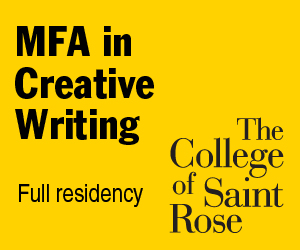
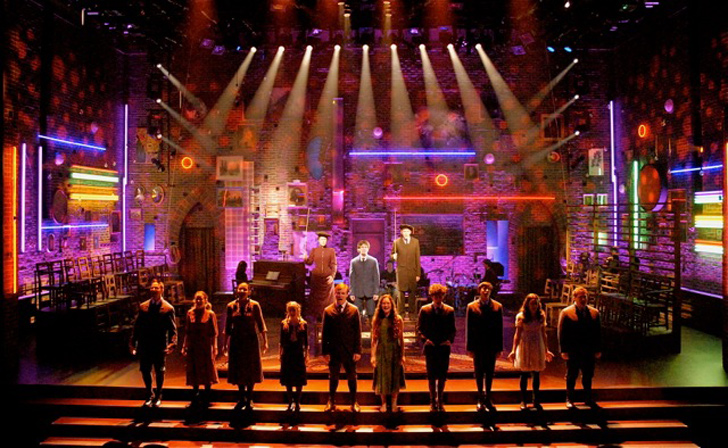

Reader Comments